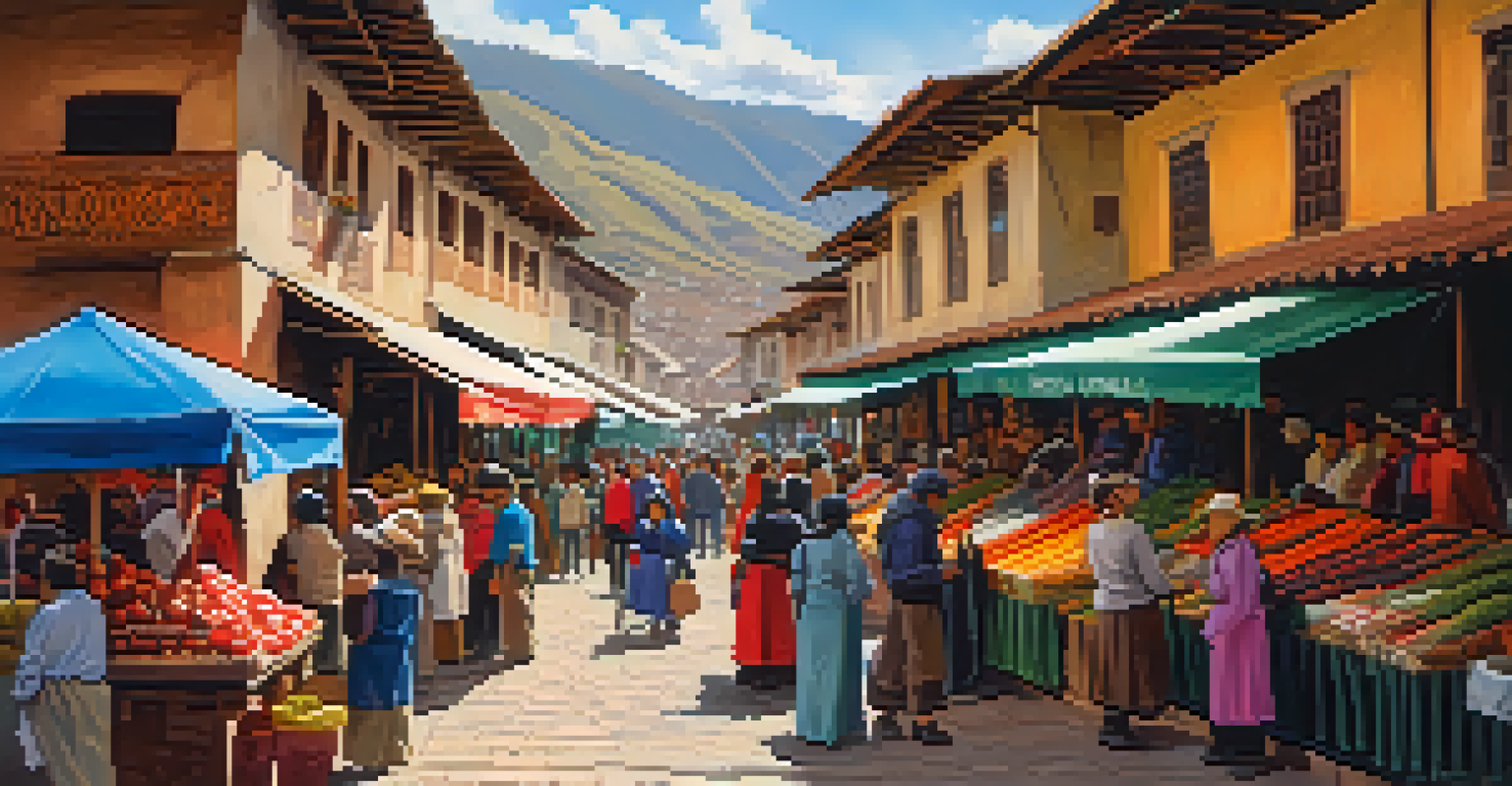Essential Safety Tips for Adventure Travel in Peru

Plan Your Adventure and Know Your Limits
Before embarking on your adventure in Peru, it's vital to have a solid plan. Research the activities you want to do, whether it's trekking to Machu Picchu or exploring the Amazon rainforest. Understanding your physical limits and choosing activities that match your fitness level can prevent injuries and ensure a more enjoyable experience.
Adventure is worthwhile in itself.
It's also a good idea to check the weather conditions for the time of your visit. Peru's diverse geography can result in vastly different climates, so being prepared with the right gear is essential. Make sure to pack layers, as temperatures can fluctuate dramatically between day and night.
Finally, consider your travel companions. If you're venturing into more challenging terrains, ensure that everyone involved is on the same page regarding the adventure's difficulty. Having a common understanding of the journey can enhance teamwork and make the experience more enjoyable.
Stay Hydrated and Eat Wisely
Staying hydrated is crucial when navigating the high altitudes of Peru, especially in places like Cusco or the Sacred Valley. Dehydration can lead to altitude sickness, which can seriously dampen your adventure. Carry a reusable water bottle and refill it regularly, opting for purified water whenever possible.

When it comes to food, be mindful of what you eat. Try to choose fresh, cooked meals from reputable restaurants, as street food can sometimes lead to digestive issues. Eating high-energy foods like nuts and dried fruits can keep your energy levels up during long treks.
Plan and Prepare for Your Adventure
Research activities, understand your limits, and check weather conditions to ensure a safe and enjoyable trip in Peru.
Remember that altitude affects everyone differently, so it's essential to listen to your body. If you start feeling unwell, don't hesitate to take it easy. Your health is more important than pushing through discomfort.
Invest in Proper Gear and Equipment
Having the right gear can make all the difference in your adventure travel experience in Peru. Invest in good quality hiking boots that offer support and traction, especially for the rugged terrains you may encounter. Comfortable clothing that wicks away moisture can also keep you dry and comfortable.
The journey of a thousand miles begins with one step.
Don't forget essentials like a first-aid kit, a flashlight, and a portable charger for your devices. These items can be lifesavers in remote areas where help may not be readily available. Additionally, consider bringing trekking poles to help with balance and reduce stress on your knees during steep climbs.
Lastly, ensure your gear is appropriate for the specific activities you plan to undertake. For example, if you're going to be biking, make sure you have a helmet and protective gear. The right equipment not only enhances your experience but also keeps you safe.
Understand the Local Culture and Customs
Peru is rich in culture and traditions, and understanding these can enhance your travel experience. Learning a few basic Spanish phrases can go a long way in connecting with locals and showing respect. Additionally, familiarize yourself with cultural customs, such as greetings and dining etiquette.
Respect for local traditions is essential, especially when visiting sacred sites or indigenous communities. Always ask for permission before taking photos of people or their property. This small gesture can foster goodwill and enrich your interactions with the local community.
Stay Safe and Secure Your Valuables
Use money belts and stay aware of your surroundings to protect your valuables while exploring Peru.
Participating in local festivals or events can also provide insights into the culture and traditions of Peru. Engaging with locals allows you to appreciate their way of life and creates memorable experiences that go beyond the typical tourist path.
Keep Your Valuables Secure
When traveling in Peru, it's essential to keep your valuables safe. Use a money belt or neck pouch to store your passport, cash, and credit cards securely. Avoid displaying expensive items like jewelry or high-end electronics, as this can attract unwanted attention.
Be cautious in crowded areas, such as markets or public transportation, where pickpocketing can occur. Stay aware of your surroundings and trust your instincts. If something feels off, it's best to remove yourself from the situation.
Consider using a lock for your backpack or suitcase when you're not actively using them. This extra layer of security can deter opportunistic thieves and give you peace of mind while you explore.
Know Emergency Contacts and Procedures
Before heading out on your adventure, familiarize yourself with local emergency contacts. This includes the police, medical services, and your country's embassy or consulate. Having this information readily available can be crucial in case of an emergency.
It's also wise to have a plan in place for different types of emergencies, whether it's a medical issue or getting lost in the wilderness. Sharing your itinerary with someone back home can help ensure that someone knows where you are and when to check in.
Acclimatize to High Altitudes Gradually
Allow your body time to adjust to altitude changes by spending a few days at lower elevations before tackling higher terrains.
Finally, consider purchasing travel insurance that covers adventure activities. This can provide you with peace of mind and financial protection in case something unexpected happens during your trip.
Adapt to the Altitude Gradually
Peru's stunning landscapes often come with high altitudes, particularly if you're heading to places like Cusco or Lake Titicaca. To avoid altitude sickness, it's crucial to give your body time to acclimatize. Spend a few days at a lower elevation before tackling more challenging areas.
During this acclimatization period, stay hydrated and avoid alcohol, as it can exacerbate the effects of altitude. Simple activities like walking around town can help your body adjust without overexerting yourself.

If you start feeling symptoms of altitude sickness, such as headaches or nausea, take them seriously. Descending to a lower elevation and resting can often alleviate these symptoms quickly.
Stay Informed About Current Events and Safety Updates
Before and during your trip, keep yourself informed about local news and safety updates. Understanding current events in Peru can help you avoid potential issues and stay safe. Local government websites or travel advisories from your country can provide valuable information.
Following social media accounts or travel blogs focused on Peru can also help you stay in the loop about any safety concerns or tips from recent travelers. Engaging with the travel community can provide insights that traditional guides might overlook.
Plan Your Adventure Wisely
Research your activities and understand your limits to ensure a safe and enjoyable experience in Peru.
Lastly, don't hesitate to ask locals or your accommodation staff about any areas to avoid or safety tips for your specific destination. Their firsthand knowledge can be an invaluable resource for ensuring a safe adventure.